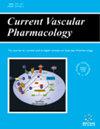Strategies to Minimize Access Site-related Complications in Patients Undergoing Transfemoral Artery Procedures with Large-bore Devices
IF 2.8
3区 医学
Q2 PERIPHERAL VASCULAR DISEASE
引用次数: 0
Abstract
: Large bore accesses refer to accesses with a diameter of 10 French or greater and are necessary for various medical devices, including those used in transcatheter aortic valve replacement, endovascular aneurysm repair stent-grafts, and percutaneous mechanical support devices. Notably, the utilization of these devices via femoral access is steadily increasing due to advancements in technology and implantation techniques, which are expanding the pool of patients suitable for percutaneous procedures. However, procedures involving large bore devices carry a high risk of bleeding and vascular complications (VCs), impacting both morbidity and long-term mortality. In this review article, we will first discuss the incidence, determinants, and prognostic impact of VCs in patients undergoing large bore access procedures. Subsequently, we will explore the strategies developed in recent years to minimize VCs, including techniques for optimizing vascular puncture through femoral cannulation, such as the use of echo-guided access cannulation and fluoroscopic guidance. Additionally, we will evaluate existing vascular closure devices designed for large bore devices. Finally, we will consider new pharmacological strategies aimed at reducing the risk of periprocedural access-related bleeding.尽量减少使用大口径设备进行经股动脉手术的患者发生与入路部位相关并发症的策略
:大口径通道是指直径为 10 French 或更大的通道,是各种医疗设备(包括用于经导管主动脉瓣置换术、血管内动脉瘤修复支架移植物和经皮机械支持设备)所必需的。值得注意的是,由于技术和植入技术的进步,经股动脉入路使用这些设备的情况正在稳步增加,这也扩大了适合经皮手术的患者群体。然而,涉及大口径设备的手术具有出血和血管并发症(VC)的高风险,会影响发病率和长期死亡率。在这篇综述文章中,我们将首先讨论大孔径入路手术患者血管并发症的发生率、决定因素和对预后的影响。随后,我们将探讨近年来为最大限度减少 VCs 而开发的策略,包括通过股骨插管优化血管穿刺的技术,如使用回声引导入路插管和透视引导。此外,我们还将评估专为大口径器械设计的现有血管闭合装置。最后,我们还将考虑旨在降低围手术期入路相关出血风险的新药物策略。
本文章由计算机程序翻译,如有差异,请以英文原文为准。
求助全文
约1分钟内获得全文
求助全文
来源期刊

Current vascular pharmacology
医学-外周血管病
CiteScore
9.20
自引率
4.40%
发文量
54
审稿时长
6-12 weeks
期刊介绍:
Current Vascular Pharmacology publishes clinical and research-based reviews/mini-reviews, original research articles, letters, debates, drug clinical trial studies and guest edited issues to update all those concerned with the treatment of vascular disease, bridging the gap between clinical practice and ongoing research.
Vascular disease is the commonest cause of death in Westernized countries and its incidence is on the increase in developing countries. It follows that considerable research is directed at establishing effective treatment for acute vascular events. Long-term treatment has also received considerable attention (e.g. for symptomatic relief). Furthermore, effective prevention, whether primary or secondary, is backed by the findings of several landmark trials. Vascular disease is a complex field with primary care physicians and nurse practitioners as well as several specialties involved. The latter include cardiology, vascular and cardio thoracic surgery, general medicine, radiology, clinical pharmacology and neurology (stroke units).
 求助内容:
求助内容: 应助结果提醒方式:
应助结果提醒方式:


